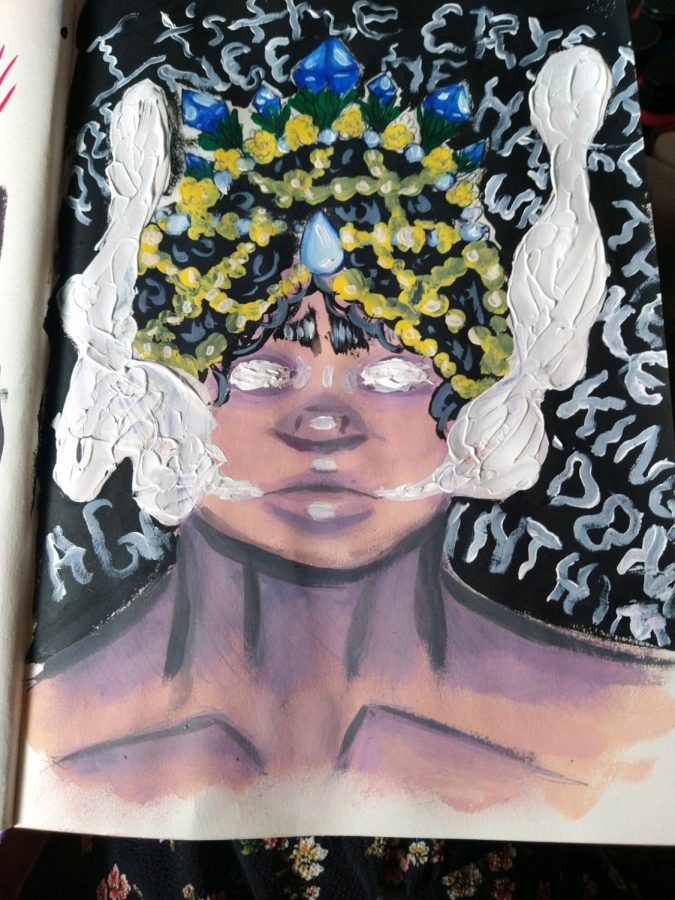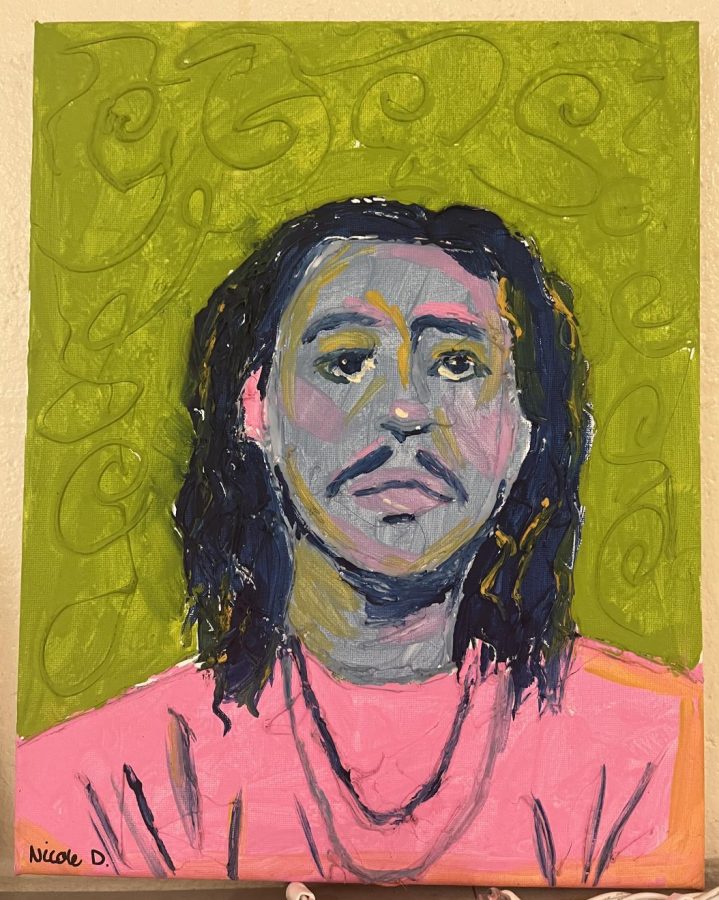The Dancing Plague of 1518
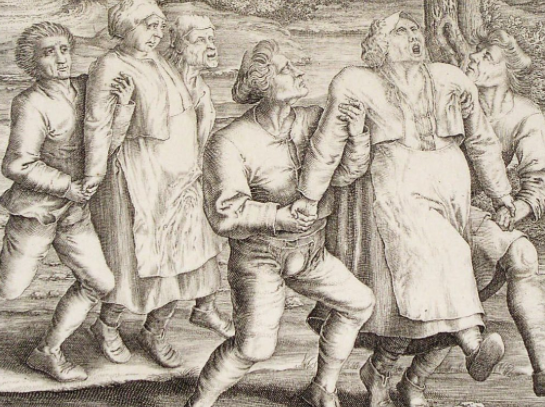
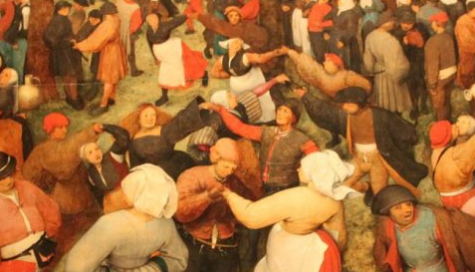
Music rings out into the thick summer air. Large groups of people dressed in ragged clothes and leather boots frantically dance on impromptu platforms. Drums, horns, and pipes play effervescent music in vain as the sun beats down on the dancing people. They twist and twirl, convulsing and shouting. Slick with sweat the people shake violently, feet swollen and bruised. Their arms flail wildly in the air, and their faces are strained with exhaust and pain. The summer of 1518 in Strasbourg has struck the people with an anomalous and heinous plague that forces individuals to dance unstopping in a feverish craze.
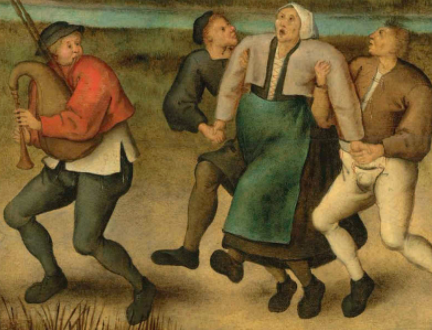
On July 14th, 1518, a woman known as Frau Troffea started dancing without musical accompaniment on the cobbled street in front of her modest home. For hours, she continued in a manic state until the sun set and she collapsed from exhaustion, twitching on the road. The next morning, she was up again, persisting in her dancing without stopping to eat or drink. Even after three days had passed, Frau Troffea had not stopped, but instead had gathered a growing audience, puzzled by her unending fit. Six days after she began, authorities, frightened by the spectacle, intervened and sent her in a wagon to the shrine of the saint that supposedly cursed her, Vitus. However, the curse had spread, and several witnesses of Frau Troffea’s craze picked it up as well. More than thirty victims were afflicted, some bound so tightly that death seemed to be the only possible denouement.
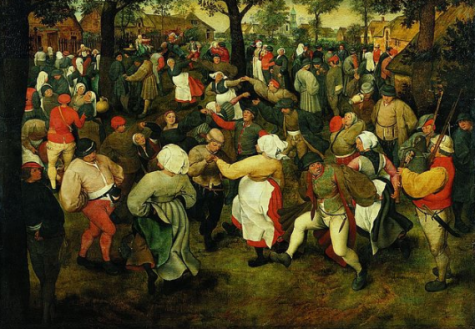
The privy council, riddled with fluster, desperately searched for the cause of this inexplicable illness, and opened their ears to all manner of ideas. The clergy believed this to be a curse of vengeance from Saint Vitus; on the other hand, the guild of physicians proposed that the dance was natural and simply a disease originating from overheated blood. Naturally, the 16th century physicians’ solution should be to have the people bled, but, instead, according to past treatments to former victims, they proposed that the people dance themselves free. Platforms were set up in the market, and guild halls were transformed into temporary dance floors. Musicians were hired to play fiddles, pipes, and drums while healthy dancers joined the afflicted to further encourage them. This was all in hopes that the dance would debilitate and eventually leave the people of Strasbourg forever. Unfortunately, this plan backfired horribly.
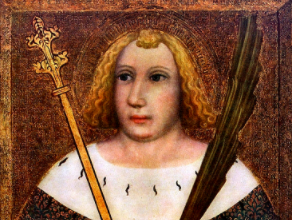
Quickly, after seeing that the medical explanation was deemed false, the people turned to Saint Vitus for mercy. Many more people were ensnared by the mania, fearing their sins and concluding the true cause of this epidemic was their impurity. Within a month, four hundred citizens were overrun by the plague. The stages were removed, and music and dance was prohibited in the city. Those most strongly afflicted were taken on a three-day ride to Saint Vitus’ shrine. Small crosses were place in their hands, and red shoes were put on their feet. Crosses were painted in consecrated oil on the soles and tops of the shoes, followed by delicately sprinkled holy water. The air was heavy with incense. Latin incantations were uttered in hopes to free the people of this curse. This ritual seemed to effectively cure the people, and word spread to Strasbourg. Many more afflicted were sent to the shrine to be forgiven, and soon after the suffering villagers were spared of the plague. After over a month of terror and hundreds of fatalities, the dancing plague had ceased, the cause still unknown.
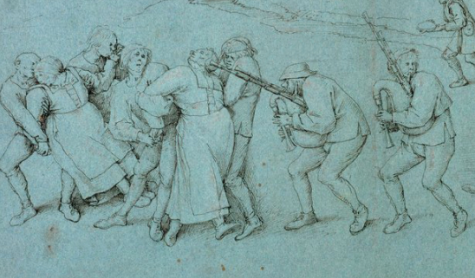
Several theories exist as to what caused this plague in the first place. One possible reason is stress-induced psychosis, a mental disorder in where people experience hallucinations or delusions. The article, “Mystery Explained? ‘Dancing Plague’ of 1518, the Bizarre Dance that Killed Dozens” explains how this stress-induced psychosis may have come to be in writing, “Having suffered severely from famine, and in many cases wiped out and reduced to begging, the region was in an ongoing crisis. Many had died of starvation. The area was riddled with diseases, including smallpox and syphilis.” Along with Strasbourg’s string of bad harvests, political instability was rampant in the area. Superstitions, anxiety, and false fears, especially that of a Christian church legend where if any were to provoke the wrath of Saint Vitus, he would send plagues of compulsive dancing, may have added more heat to the flame, causing this mass hysteria. This theory appears to be one of the more plausible ones, though it is still uncertain whether or not it is true. Another theory relates to that which caused the mass hysteria of the Salem Witch Trials: accidental ingestion of ergot, a toxic mold that grows on damp rye and produces spasms and hallucinations. Although, according to the article, “The Dancing Plague of 1518”, “…it also restricts blood flow to the extremities. Someone poisoned by it simply could not dance for several days in a row.” Therefore, this theory cannot be so probable. Several other theories exist as to what caused this strange monomania among the people of Strasbourg; however, the true reason for the dancing plague will probably be concealed forever.













